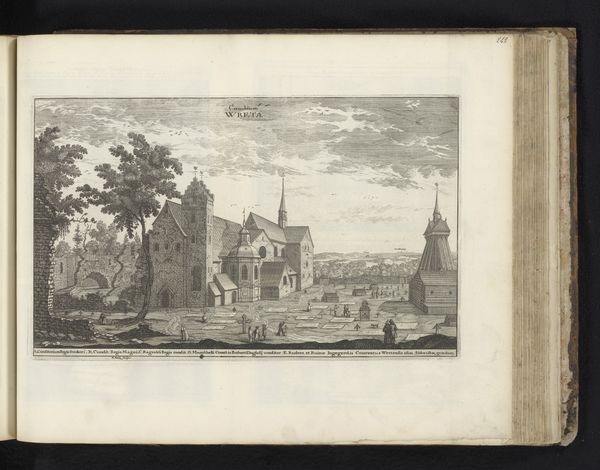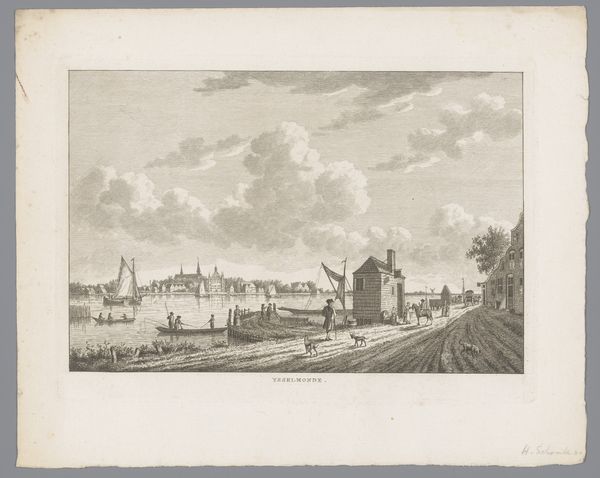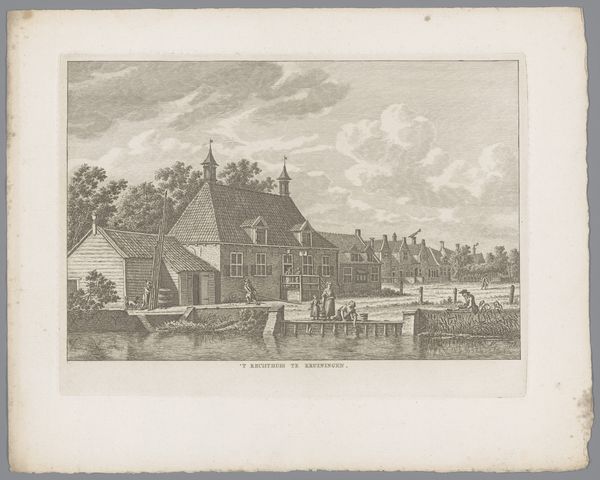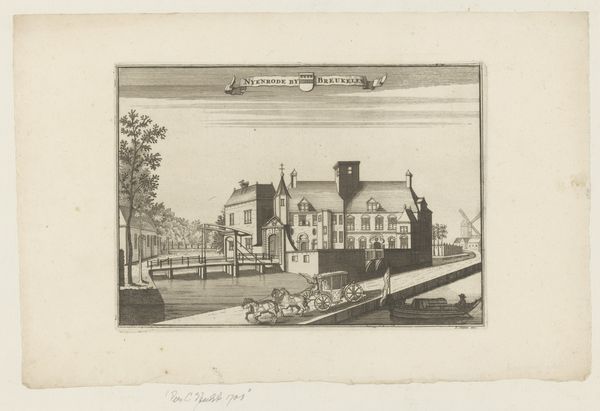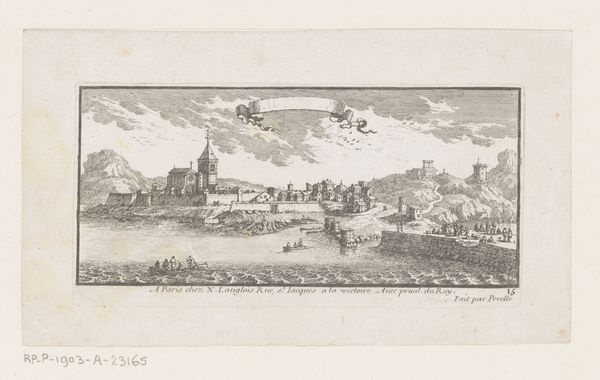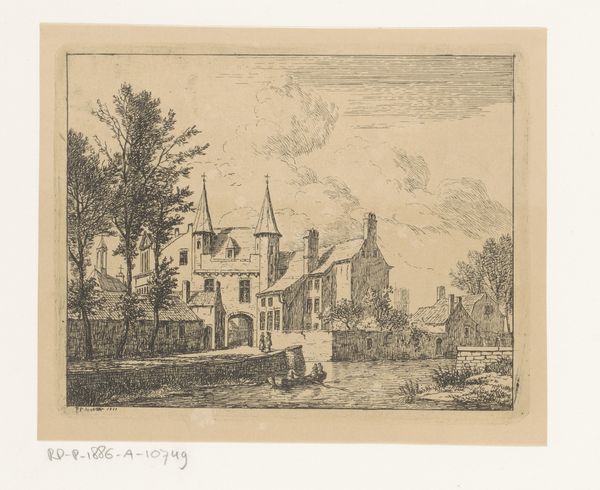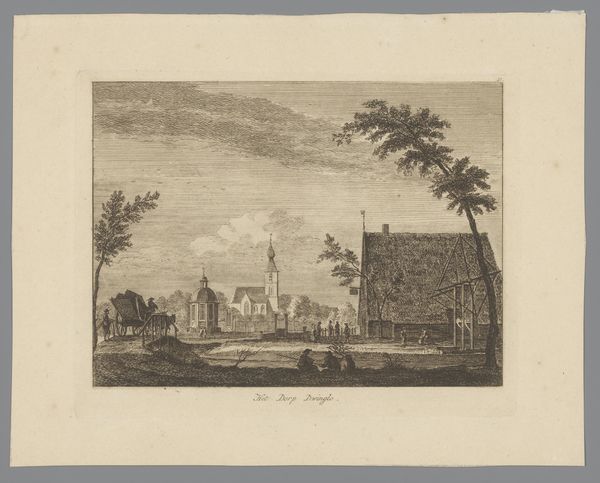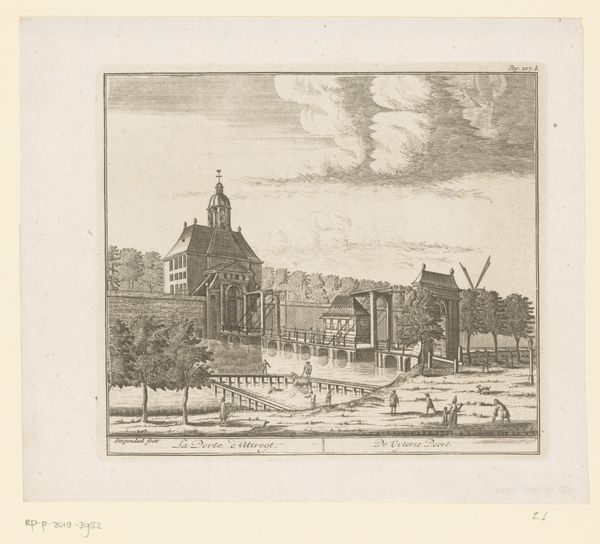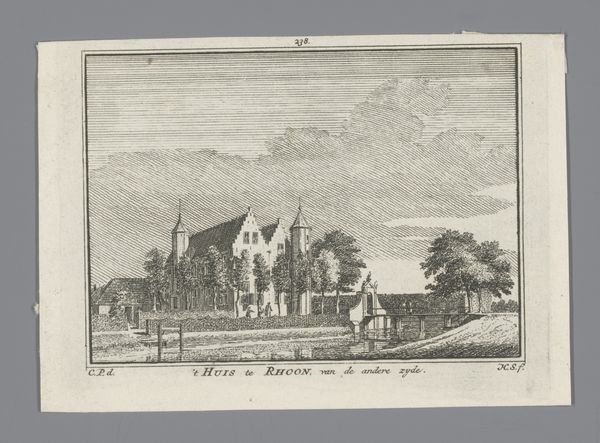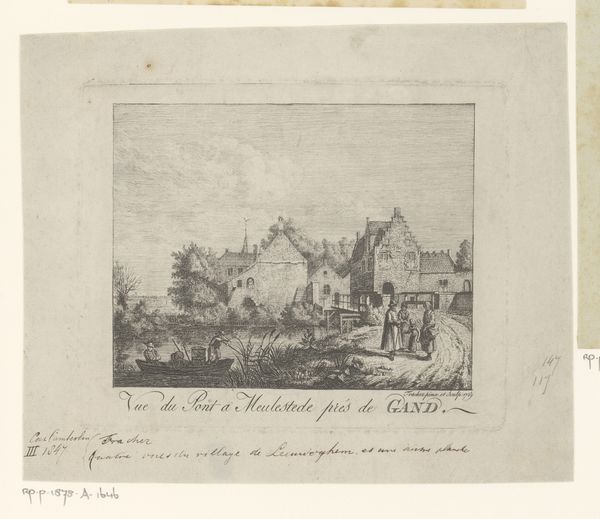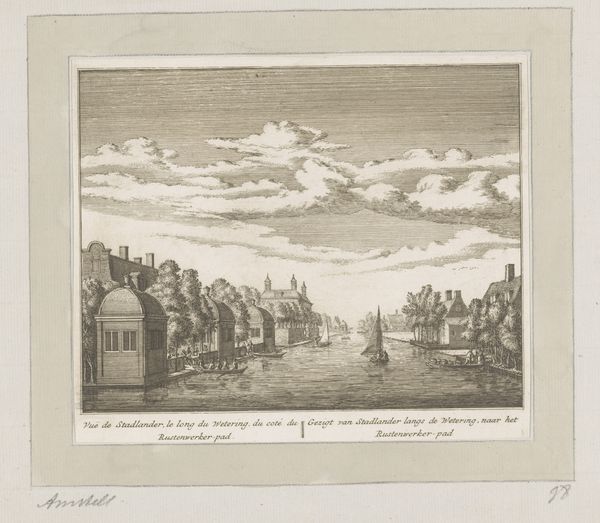
print, engraving
#
dutch-golden-age
# print
#
landscape
#
line
#
cityscape
#
engraving
#
realism
Dimensions: height 166 mm, width 195 mm
Copyright: Rijks Museum: Open Domain
Curator: Welcome! We are looking at "View of the Wetering towards the Stadlanderbrug" by Abraham Rademaker, dating from 1730. It is an engraving. Editor: It's incredibly serene. The crispness of the lines almost mutes the scene, turning the water into something almost like polished steel. Curator: Rademaker utilizes a refined linear technique. Notice how the lines, their varying weight and density, articulate not only form but also texture—the gentle ripples on the water’s surface, the sturdy brickwork of the buildings. The precision renders a kind of order and structure. Editor: But what about the laborers who maintained this system of canals, or the craftspeople building those canal houses? The engraving aestheticizes urban development without acknowledging its grounding in materials or human work. Were the inks mixed on-site, do you think? The etching ground applied by hand? We miss so much of that. Curator: Interesting point. We see the organization of the scene, this landscape distilled, not the mess and labour involved in its construction. Compositionally, it presents a classical tripartite division: earth, water, and sky, creating spatial harmony through calculated proportions. Editor: All that infrastructure, built for trade and power, now neatly rendered for leisurely consumption! I see the labor minimized as simply men casually rowing boats! What narratives get silenced through that act of rendering? Curator: The work encourages contemplative viewing. Rademaker invites us to dissect the elements of urban design and construction using only the relationships among these clear, delineated forms. Editor: Maybe so, but reflecting on the human input really underscores how seemingly simple scenes contain multitudes of actions and historical processes. Thanks for sharing your thoughts! Curator: Likewise. These opposing views really let us see different facets.
Comments
No comments
Be the first to comment and join the conversation on the ultimate creative platform.

